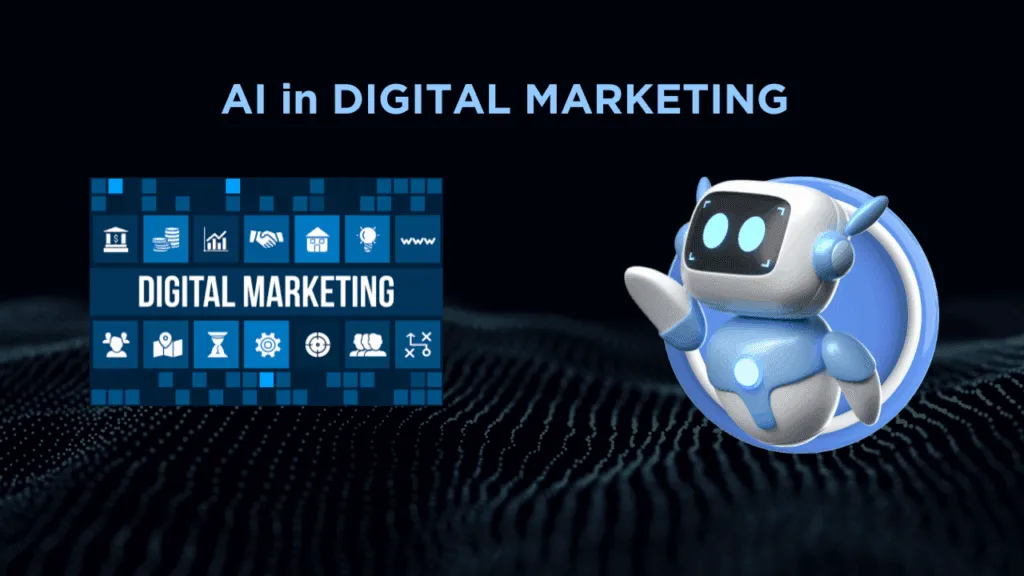How AI Is Transforming Digital Marketing in 2025 and Beyond

Introduction: The Shift from Clicks to Conversations
Digital marketing has come a long way. In the early days, success was measured in clicks, views, and impressions. But in 2025, that’s no longer enough. The rise of Artificial Intelligence (AI) has moved the focus from basic engagement to meaningful, real-time conversations.
Businesses today want personalized interactions, not just ads. Customers want to feel heard, not targeted. And that’s exactly where AI is creating a revolution transforming how brands connect, understand, and serve their audiences.
1. AI-Powered Chatbots: The 24/7 Sales Assistant
Gone are the days when customers waited for email responses or business hours. AI-powered chatbots now handle millions of conversations daily answering questions, guiding users, and even closing sales.
What’s New in 2025?
Emotion-aware bots that sense user tone and respond more humanly.
Voice-based chatbots using NLP (Natural Language Processing) for real-time talk.
Bots that learn and evolve with each customer interaction.
Example:
E-commerce brands like Flipkart and Amazon use AI bots to reduce cart abandonment by offering instant help, offers, and product comparisons.
2. Predictive Analytics: Know What They Want Before They Do
AI can now predict customer behavior before it happens. Using data from past searches, purchases, and behavior, businesses can offer hyper-personalized experiences.
What This Means:
Suggesting the right product at the right time.
Predicting when a customer is likely to churn.
Sending custom offers based on browsing habits.
Real-life Use Case:
Spotify’s AI recommends songs by analyzing user mood and timing. Marketers can do the same with product offers.
3. Voice Search Optimization: Talk is the New Type
With the rise of smart assistants like Alexa, Siri, and Google Assistant, people are searching using their voice, not keyboard.
How AI Changes Search Marketing:
Marketers must optimize for voice queries (e.g., “What’s the best phone under 30k?”).
AI tools help brands discover natural language keywords.
Websites now use conversational content instead of keyword stuffing.
Tip:
Use FAQ-style content on your pages AI detects it as voice-friendly.
4. Content Creation with AI: Smarter, Not Harder
AI is no longer just analyzing data it’s creating content too. Jasper, and Copy.ai help businesses write:
Blog posts
Product descriptions
Email campaigns
Social media captions
The Human + AI Collaboration:
AI does the heavy lifting with data and structure.
Humans add emotion, brand tone, and creativity.
This combo is saving time and money for brands while increasing output.
5. Hyper-Personalization in Ads and Emails
In 2025, generic ads are ignored. People expect brands to know them personally. AI helps marketers create tailored campaigns for each user.
How It Works:
AI segments audience based on behavior and interests.
Ads are shown based on user mood, time of day, device type, etc.
Email campaigns adapt in real-time to user actions.
Example:
Netflix sends different thumbnails to different users for the same show, based on past viewing behavior. Imagine doing that with your product banners.
6. Programmatic Advertising: AI Buying Ads in Real-Time
AI now automates ad placements through programmatic advertising buying and placing ads in milliseconds.
Benefits:
Higher ROI with precise targeting.
Real-time adjustments to ad bids and content.
Lower ad waste and more conversions.
Example:
When a user visits a travel blog, AI instantly places a hotel ad they might be interested in before they even search.
7. AI in Video Marketing: Smart Edits and Better Targeting
Video remains king in 2025, but AI has made it smarter. Now, AI tools:
Auto-generate video scripts
Recommend ideal video length
Edit reels with best-performing clips
Personalize thumbnails and captions
Smart Targeting:
AI even predicts which part of your video will hook the audience and suggests better upload timing based on your followers’ activity.
8. Visual and Voice AI for Product Discovery
AI isn’t just about text anymore. With Visual Search (uploading a photo to search for a product) and Voice Commerce, users now interact differently.
Examples:
Google Lens lets users find products by snapping a picture.
Voice assistants help users order food, buy products, or track deliveries — all via voice.
This means your business needs to optimize for multiple AI inputs, not just search keywords.
9. Ethical AI and Trust in Marketing
As AI grows more powerful, transparency and ethics matter more than ever. Customers want to know:
How their data is used
Whether AI decisions are fair
If content is human or AI-generated
Best Practices:
Add a “Powered by AI” label on AI-driven tools.
Be transparent about data collection.
Use AI ethically don’t mislead or manipulate users.
Trust = Loyalty. The brands that are honest about AI win hearts in 2025.
10. The Future Ahead: What’s Next After 2025?
We’re entering an age where AI will handle 90% of customer interactions by 2030. Soon, you’ll see:
AI influencers representing brands
Augmented Reality + AI for real-world try-ons
AI-driven loyalty programs that adapt to customer behavior.







